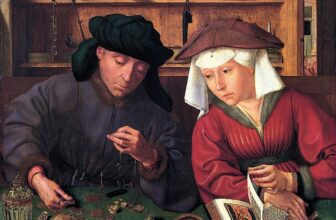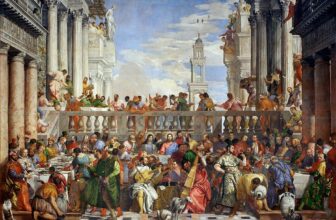
How the Louvre Acquires New Artworks
The Louvre Museum, an emblem of art and culture, houses one of the most extraordinary collections of artworks in the world. From the iconic Mona Lisa to the majestic Winged Victory of Samothrace, its vast array of masterpieces spans centuries and civilizations. However, acquiring new artworks is no simple feat for such an esteemed institution. The process is a meticulous blend of strategy, scholarship, diplomacy, and financial acumen. This story explores the fascinating journey of how the Louvre continues to expand its collection in the modern age.
A Legacy of Collecting
The Louvre’s collection originated from the royal art collection of Francis I in the 16th century, who brought in works from Italian masters, including Leonardo da Vinci. Over the years, subsequent monarchs, particularly Louis XIV, added more treasures. The museum was officially established during the French Revolution in 1793, transforming the royal collection into a public one. Since then, acquisitions have been shaped by historical events, political decisions, and curatorial vision.
How Does the Louvre Acquire New Artworks Today?
The process of acquiring new pieces for the Louvre is multifaceted, involving extensive research, expert recommendations, and sometimes, international diplomacy. Here are the key ways the Louvre expands its collection:
1. Purchases and Auctions
One of the primary means of acquisition is through direct purchases, often at prestigious auctions such as Sotheby’s or Christie’s. The museum’s curators and experts closely monitor the art market, looking for pieces that align with the museum’s vision and fill gaps in its collection.
For instance, in 2019, the Louvre acquired a rare painting, The Virgin and Child with Saint Anne and the Infant Saint John the Baptist, attributed to Leonardo da Vinci’s workshop. The museum secured the painting for €2.4 million, recognizing its historical and artistic significance.
Acquiring artworks through auctions requires substantial financial resources. The museum often relies on donations, endowments, and government funding to facilitate such purchases.
2. Donations and Bequests
Philanthropy plays a crucial role in the Louvre’s acquisitions. Wealthy collectors, patrons of the arts, and even artists themselves donate pieces to the museum. The Louvre has received numerous significant donations throughout history, enriching its collection without the financial burden of purchasing artworks.
One remarkable example is the 2016 donation by American billionaire Marlene Hays, who gifted an exquisite collection of 18th-century French furniture and decorative arts valued at millions of euros. Similarly, in 2019, a rare 18th-century drawing by François Boucher was donated, further strengthening the museum’s holdings of Rococo art.
3. Cultural Diplomacy and State Acquisitions
As a state-run institution, the Louvre benefits from France’s diplomatic relationships with other nations. Art acquisitions sometimes result from negotiations between governments, cultural exchanges, or restitution agreements.
For example, in 2015, the Louvre acquired two ivory reliefs from the 12th century, thanks to a partnership between the French Ministry of Culture and private donors. Such acquisitions often involve diplomatic discussions and legal considerations, ensuring that cultural heritage is preserved while being shared globally.
4. Restitution and Ethical Considerations
The ethics of art acquisition have become increasingly important in the museum world. The Louvre, like other institutions, must ensure that its acquisitions are legally and ethically sound. It has returned looted artworks in some cases and refrains from acquiring pieces with unclear provenance.
For instance, the museum has worked with countries like Egypt and Italy to address concerns over historical looting and ensure that acquisitions comply with international heritage laws. Ethical acquisitions not only enhance the museum’s credibility but also foster global cooperation in preserving cultural treasures.
5. Archaeological Excavations and Discoveries
The Louvre’s Department of Near Eastern Antiquities has been involved in numerous archaeological missions worldwide, particularly in Egypt, the Middle East, and the Mediterranean. Many discoveries from these excavations have found their way into the museum’s collection, legally acquired through agreements with host countries.
For instance, the Louvre’s acquisition of ancient Mesopotamian artifacts has been made possible through longstanding partnerships with excavation teams working in Iraq and Iran. Such efforts contribute significantly to the museum’s growing collection of antiquities.
6. Long-Term Loans and Special Acquisitions
In some cases, instead of outright purchases, the Louvre secures important artworks through long-term loans from private collectors, institutions, or governments. These agreements allow the museum to display significant pieces while maintaining financial flexibility.
A notable example is the partnership between the Louvre and the Abu Dhabi government, resulting in the creation of the Louvre Abu Dhabi in 2017. Through this agreement, several masterpieces from the Louvre’s collection have been exhibited in the UAE, while Louvre Abu Dhabi has contributed valuable works to the Paris museum’s collection.
Challenges in Acquiring New Artworks
While the Louvre’s acquisitions enrich its collection, the process comes with several challenges:
- Financial Constraints: Despite government support and donations, acquiring high-value artworks requires significant funds. Competition with private collectors and other museums often drives prices to astronomical levels.
- Provenance and Authenticity: Ensuring that artworks are not forged, stolen, or illegally excavated is a crucial part of the acquisition process.
- Storage and Conservation: With millions of pieces already in its collection, the Louvre must carefully assess whether it has the capacity to store and preserve newly acquired artworks.
- Public and Institutional Scrutiny: Every acquisition undergoes scrutiny by art historians, government officials, and the public, ensuring that the Louvre maintains transparency in its acquisitions.
The Future of Louvre’s Acquisitions
As the art world evolves, the Louvre continues to adapt its acquisition strategies. With the rise of digital art, contemporary acquisitions, and new forms of patronage, the museum is exploring innovative ways to expand its collection.
In recent years, the Louvre has shown interest in acquiring more modern and contemporary works, bridging the gap between the past and present. Digital archives and artificial intelligence are also being used to track down lost or undiscovered masterpieces, making acquisitions more efficient and informed.
With its enduring commitment to artistic excellence and cultural preservation, the Louvre remains a beacon of art acquisition, ensuring that future generations can continue to marvel at the world’s artistic heritage.
Acquiring new artworks for the Louvre is a complex and fascinating process that blends history, strategy, and diplomacy. Whether through auctions, donations, diplomatic agreements, or archaeological discoveries, the museum continues to enrich its collection, preserving humanity’s artistic achievements for generations to come. As the art world evolves, so too does the Louvre’s approach, ensuring that it remains one of the greatest cultural institutions in the world.




